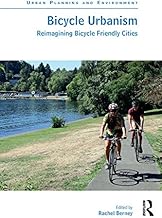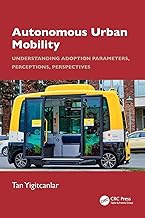Summary of "7 principles for building better cities | Peter Calthorpe | TED"
Summary of “7 principles for building better cities” by Peter Calthorpe (TED Talk)
Peter Calthorpe addresses the urgent challenge of accommodating an additional three billion people in cities while tackling climate change. He highlights how urban form directly affects environmental sustainability, social well-being, economic vitality, and community connectedness. According to Calthorpe, the design of cities reflects our collective humanity, and getting urban development right is crucial for solving climate problems.
Main Ideas and Concepts
-
Urban growth and climate change are deeply interconnected. The doubling of the urban population demands thoughtful city design to prevent worsening climate issues. Cities influence emissions as well as social and economic outcomes.
-
Sprawl is the primary villain in urban development. Sprawl is not just low-density suburban expansion but any development that isolates people socially, economically, and physically from nature and each other. It fragments communities and reduces opportunities for interaction and thriving urban life.
-
Urban form has multiple co-benefits that unite diverse stakeholders. Environmentalists, farmers, neighborhood advocates, and affordable housing proponents often have conflicting interests but can find common ground in compact, mixed-use, walkable development.
-
California case study: contrasting sprawl vs. compact development scenarios.
- Sprawl: More shopping malls, subdivisions, office parks; doubling urban footprint; higher car dependence.
- Compact development: Walkable neighborhoods, mixed-use, low-rise, transit-oriented; reduces greenhouse gases, vehicle miles traveled, household costs; improves health outcomes.
-
Los Angeles as an example of transformation towards transit-oriented development. Since 2008, LA has invested heavily in transit infrastructure (via $400 billion bonds) and none in new highways, aiming to become a city of walkers and transit users.
-
High-density sprawl in China presents unique challenges. Large superblocks isolate residents and lack local services, causing social and environmental problems such as severe smog and health costs.
-
Alternative urban design in China emphasizes:
- Transit stations as hubs with defined walking radii.
- Preservation of green space and ecological features.
- Small urban blocks with local shops and auto-free streets.
- Prioritizing pedestrians, bikes, and transit over cars.
-
Rethinking street allocation: Instead of dedicating 100% of street space to cars, allocate 70% to non-car uses (walking, biking, transit) to improve city functioning and equity.
The 7 Principles for Building Better Cities
-
Preserve the natural environment, history, and critical agricultural land.
-
Mix uses and populations:
- Combine residential, commercial, and service land uses.
- Foster diverse communities by mixing incomes and age groups.
-
Walk:
- Design cities that encourage walking; great cities are walkable.
-
Bike:
- Promote biking as an efficient, healthy, and historic mode of transport.
- Example: China’s policy to add six meters of bike lanes on every street.
-
Connect:
- Create a street network with many routes and street types, avoiding singular, isolated corridors.
-
Ride:
- Invest significantly in public transit; no single technology (like autonomous vehicles) will solve urban mobility alone.
-
Focus:
- Organize urban form around transit infrastructure instead of freeways, shifting the city’s structural hierarchy.
Additional Insights on Autonomous Vehicles (AVs)
Peter Calthorpe expresses skepticism about AVs solving urban mobility problems, citing concerns such as:
-
Increased vehicle miles traveled (VMT) due to private ownership encouraging longer commutes and sprawl.
-
Low willingness to share rides leading to more cars on the road.
-
Potential worsening of congestion and promotion of isolated travel rather than community interaction.
He emphasizes that walking, biking, and transit remain the most sustainable and community-friendly modes of transportation.
Speakers/Sources Featured
- Peter Calthorpe – Urban planner and main speaker presenting the content.
- Chris Anderson – TED curator, moderating the Q&A segment.
In summary, Calthorpe advocates for compact, mixed-use, walkable, bikeable, transit-oriented urban design that preserves natural and social environments, counters sprawl, and fosters community. His seven principles serve as a global framework for sustainable city-building, supported by examples from California, Los Angeles, and China. He cautions against overreliance on autonomous vehicles and emphasizes the importance of human-scale urbanism.
Category
Educational
Share this summary
Featured Products




